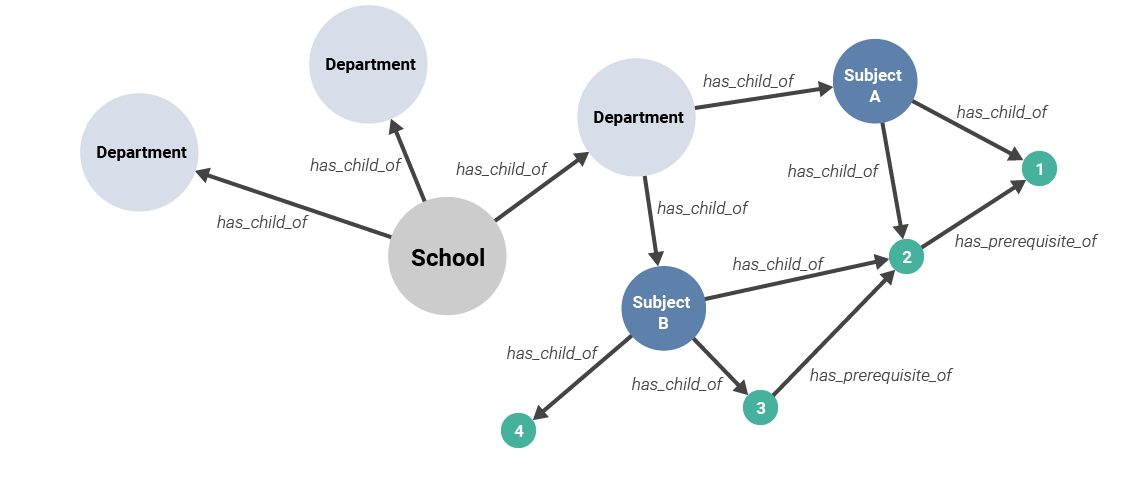These docs describe the APIs of the Open Ed Graph. Our APIs are free to use for all personal or commercial purposes, but all users must register to get access and cite as follows:
Data from the Open Ed Graph by the MIT Mapping Lab.
Before continuing onto the details of the API calls, it is helpful to paint a picture of how the Open Ed Graph data is structured. This section gives a short summary; for a more in-depth discussion, read our paper on network modeling.
Data in the Open Ed Graph is modeled in a graph structure, in which both entities and relationships exist as first-class citizens. This differs from the traditional data structure in a SQL-like table, where relationships are only implicitly-defined via keyed attributes in a table. For example, a simple data set may be traditionally represented in an SQL-like table as:
| Entity | departments | subjects | learning objectives | prerequisites |
| School | [1, 2, 3] | |||
| Department 1 | [A, B] | |||
| Subject A | [LO1, LO2] | |||
| Subject B | [LO2, LO3, LO4] | |||
| Learning Objective 1 |
However, in a graph structure, this data set is instead modeled as the following graphic illustrates:

This graph structure enables extremely fast and intuitive queries, especially with queries relating to paths and graph analytics. This is possible because instead of having to compute complex and error-prone joins, we traverse the graph where relationships are first-class citizens in themselves.